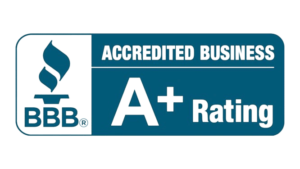
Health Insurance Solutions Made Easy
How Buying Private Health Insurance Works
Some Americans get insurance by enrolling in a group health insurance plan through their employers.
If your company does not offer an employer-sponsored plan, and if you are not eligible for Medicare or Medicaid, individuals and families have the option of purchasing insurance policies directly from private insurance companies, or through the Health Insurance Marketplace by using a trusted contracted agency. Our agents are here to help you with all of your options. CALL NOW !
Scenarios When You Might Need Private Health Insurance
There are certain circumstances that make it more likely that you will need to purchase your own health insurance plan, including:
A YOUNG ADULT 26 YEARS OF AGE OR OLDER
Under provisions of the Affordable Care Act (ACA) of 2010, young people can be covered as dependents by their parents’ health insurance policy until they turn 26 years old. After that, they must seek out their own insurance policy.
Unemployed
If you lose your job, you may be eligible to maintain coverage through your employer’s health insurance plan for a period of time through a program called the Consolidated Omnibus Budget Reconciliation Act (COBRA). COBRA allows eligible employees and their dependents the option to continue health insurance coverage at their own expense.
While coverage through COBRA can be maintained generally for up to 18 months (under certain circumstances), the cost of enrolling in COBRA is very high. This is because the formerly employed person pays the entire cost of the insurance. Typically, employers pay a portion of healthcare premiums on behalf of their employees.
A PART-TIME EMPLOYEE
Part-time jobs rarely offer health benefits. A part-time job is any position that requires employees to work a lower number of hours than would be considered full time by their employer, or 40 hours per week. If you work part time, you usually must enroll in your own health insurance.
SELF-EMPLOYED
A self-employed person may work as a freelancer or own a business. Some self-employed people can get health insurance through a spouse’s plan. If not, they must provide their own health insurance.
IF YOU RETIRE (OR YOUR SPOUSE/PARENT RETIRES)
When you retire, you will likely no longer be eligible for employer-sponsored health insurance. If you are under age 65 and not disabled, you will need to purchase individual private health insurance until you turn 65 and can apply for Medicare. Many retirees choose to purchase private Medigap or Medicare Advantage plans in addition to Medicare as a way of guaranteeing more comprehensive coverage. Some retired people may also decide to completely replace Medicare coverage with a private Medicare Advantage plan.
It is important to note that Medicare, Medigap, and Medicare Advantage plans are only for the individual—your spouse, partner, and any dependents cannot be insured through your Medicare plan. This means that if your family was previously insured through your employer’s plan, and you retire, your family members may need to enroll in individual insurance plans.
DROPPED BY YOUR EXISTING INSURER
Although the ACA prevents insurers from canceling your coverage or denying you coverage due to a preexisting condition or because you made a mistake on your application there are other circumstances when your coverage may be canceled. It’s also possible that your insurance may become so expensive that you can’t afford it.
Choosing the Best Insurance Plan for You
Health Maintenance Organization (HMO)
A health maintenance organization (HMO) is a company with an organizational structure that allows them to provide insurance coverage for their subscribers through a specific network of healthcare providers.
Typical HMO features include paying for insurance coverage for a monthly or annual fee. Premiums tend to be lower for HMOs because health providers have patients directed at them, but the disadvantage is that subscribers are limited to accessing a network of doctors and other healthcare providers who are contracted with the HMO.
Preferred Provider Organization (PPO)
A preferred provider organization (PPO) is a type of insurance plan in which medical professionals and facilities provide services to subscribed clients at reduced rates. Healthcare providers that are part of this network are called preferred providers or in-network providers.
Subscribers of a PPO plan have the option of seeing healthcare providers outside of this network of providers (out-of-network providers), but the rates for seeing these providers are more expensive.
Exclusive Provider Organization (EPO)
An exclusive provider organization (EPO) is a hybrid of HMO and PPO plans. With an EPO plan, you can only receive services from providers within a certain network. However, exceptions can be made for emergency care.
Another characteristic of an EPO plan is that you may be required to choose a primary care physician (PCP). This is a general practitioner who will provide preventive care and treat you for minor illnesses. In addition, with an EMO plan, you usually do not need to get a referral from your PCP to see a specialist physician.
Short-Term Insurance Policy (STM)
A short-term insurance policy covers any gap that you might experience in coverage if, for example, you change jobs and your new company plan doesn’t kick in immediately.
It typically lasts for two to twelve months. Term lengths vary by state, and in some U.S. states, you may be eligible for a short-term plan for up to 12 months.
Short-term health insurance is also called temporary health insurance or term health insurance. It can be useful if you’re changing jobs, waiting to become eligible for Medicare coverage, or waiting out the designated open enrollment period for a plan.
Under a short-term insurance plan, your spouse and other eligible dependents may also be covered. However, one important caveat of a short-term insurance plan is that in some cases, pre-existing conditions can disqualify you from coverage. The definition of a preexisting condition varies depending on the state where you live, but it is usually defined as something you have been diagnosed with or received treatment for within the last two to five years.
Choosing a Deductible
Once you’ve decided on the type of plan that is best for you, you’ll need to determine how much you can afford to pay as a deductible. This is the predetermined amount that you pay for covered healthcare services before your insurance plan starts to pay.
What can you afford to pay in out-of-pocket medical expenses each year? With most health insurance plans, the higher your deductible is, the lower your monthly premium will be. If your monthly cash flow is low, you might have to opt for a higher deductible.
Another key consideration when selecting an insurance plan is the plan’s out-of-pocket maximum. After you’ve spent this amount on deductibles and medical services through co-payments and co-insurance, your health plan will pay the entire cost of covered benefits.
How Much Does Private Health Insurance Cost?
While many people are scared by the prospect of purchasing their own insurance versus enrolling in an employer-sponsored plan, some studies have shown that it can end up being more affordable than employer-sponsored plans.
A study from the Kaiser Family Foundation found that the average monthly premium for an employer-sponsored insurance plan for individual coverage in 2021 was around $645 and $1,850 for family coverage.
If you were to purchase your own insurance outside of an employer-sponsored plan, the average cost of individual health insurance was $438. For families, the average monthly premium was $1,168.
In addition, if you end up purchasing coverage through the Health Insurance Marketplace, you may qualify for a Cost-Sharing Reduction subsidy and Advanced Premium Tax Credits. These can lower your premium payment amounts, your deductible, and any co-payments and co-insurance for which you are responsible.
Click the Phone Icon to speak to a Licensed Agent or schedule an appointment below…
You agree to receive automated promotional messages. This agreement is not a condition of purchase. Receive up to 4 messages per month. Reply STOP to opt out or HELP for help. Message & data rates apply. Terms and privacy policy can be found at uuainsurnaceagency.com
Additional Plan Types
High-Deductible Health Plan (HDHP)
A high-deductible health plan (HDHP) has a couple of key characteristics. As its name implies, it has a higher annual deductible than other insurance plans. A deductible is the portion of an insurance claim that the subscriber covers themselves. HDHPs typically have lower monthly premiums.
This type of plan is ideal for young or generally healthy people who don’t expect to demand healthcare services unless they experience a medical emergency or an unexpected accident.
The last defining feature of a high-deductible health plan is that it offers access to a tax-advantaged Health Savings Account (HSA).
HSA subscribers can contribute funds that can later be used for medical costs that their HDHP doesn’t cover. The advantage of these accounts is that the funds are not subject to federal income taxes at the time of the deposit.
Consumer-Driven Health Plan (CHDP)
Consumer-driven health plans (CDHPs) are a type of HDHP. A portion of services that subscribers receive is paid for with pretax dollars. Like other HDHPs, CDHPs have higher annual deductibles than other health insurance plans, but the subscriber pays lower premiums each month.
Point-of-Service (POS) Plan
A point-of-service (POS) plan provides different benefits to subscribers based on whether or not they use preferred providers (in-network providers) or providers outside of the preferred network (out-of-network providers). A POS plan includes features of both HMO and PPO plans.
Catastrophic Coverage
Catastrophic health insurance is a type of insurance plan that is typically only available to adults ages 30 or younger. To qualify, you must receive a hardship exemption from the government.
Catastrophic health insurance typically has lower premiums than other health insurance plans.
These types of plans are intended for people who cannot afford to spend much money every month on insurance premiums but don’t want to be without insurance in the event of a serious accident or illness.
While catastrophic health insurance plans may have low monthly premiums, they typically have the highest possible deductibles.


